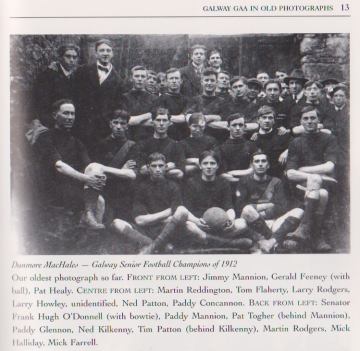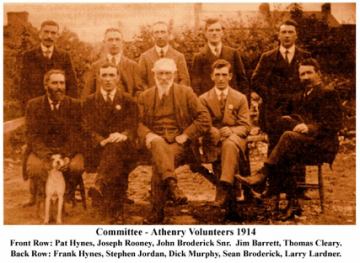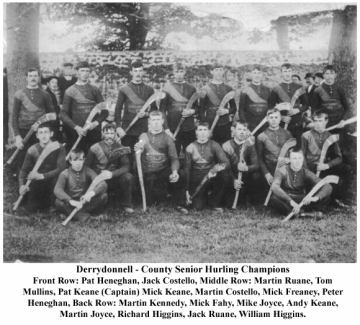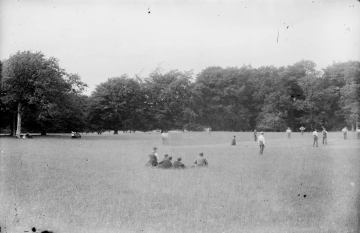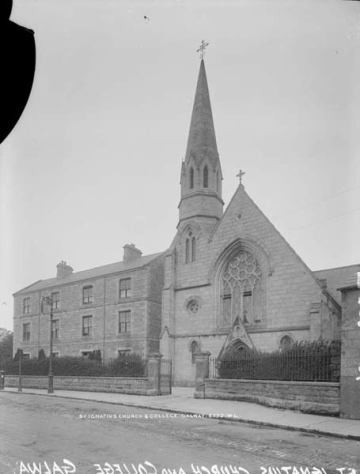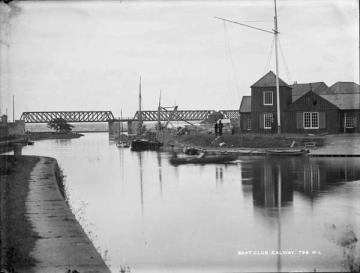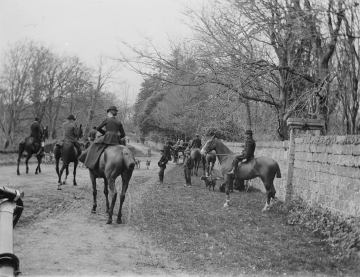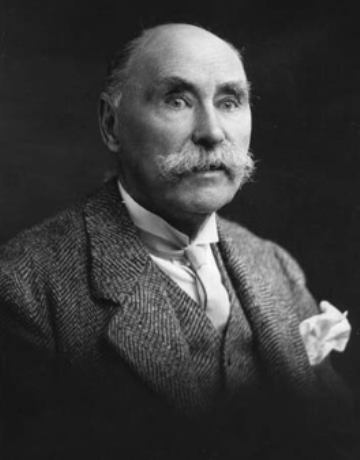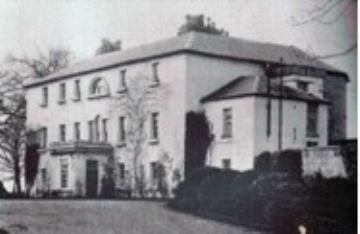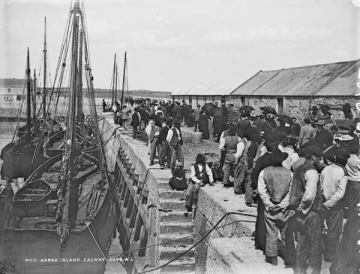Sporting and cultural life in Galway in the early 20th century
View the photo galleryGalway in 1911 was a county in thrall to the Gaelic Athletic Association. It was not until the 1920s that the county succeeded in winning the All-Ireland football and hurling championships. Nonetheless, by 1911 the GAA was already the dominant sporting organisation in Galway. A necklace of clubs stretched across the county, with hurling predominating in the east along the banks of the River Shannon and gaelic football played elsewhere.
Hurling was still being played in Galway when the GAA was established in 1884. For several years the local hurlers in Galway resisted the spread of GAA into the county and continued to play by their own local rules. The desire to test themselves against men from other counties eventually led to acceptance of the GAA. The first GAA convention held in the county took place in Athenry in 1886 and amongst the first men to organise the GAA in Galway were IRB members such as P.C. Kelly. Indeed, from the very beginning the GAA in Galway was intimately bound into nationalist politics.
A Galway team drawn from Meelick, Killimor and Eyrecourt reached the first All-Ireland hurling final, which was played in Birr, King’s County on April Fool’s Day, 1888. The goalkeeper on that day was Patrick Larkin from Kiltormer, a man who had been imprisoned for activities during the land war and the Plan of Campaign and who was an active nationalist. Amongst his children were three boys named Theobald, Emmet and Parnell. Patrick Larkin’s grandson, (another Emmet Larkin) subsequently achieved pre-eminence as a historian in America. The Galway team lost to Thurles, who were representing Tipperary.
In 1911 the county contested and lost the All Ireland hurling semi-final to Limerick by 8-1 to 2-0. In the same year, 1911, the Galway footballers lost out to Cork. Although national inter-county success continued to elude the county, the Galway club championships were keenly contested. Amongst the leading clubs was Tuam Stars with players such as Fred Fore. In 1911 the Tuam Stars won the Galway Senior Football championships. The success of the club was rooted in a tradition of men such as Michael C. Shine who devoted their considerable energies to its promotion. Shine was a town commissioner in Tuam and a leading auctioneer.
The sporting revolution which produced the GAA was in full display across Galway. The establishment of the GAA mirrored the establishment of associations to promote soccer, rugby and a whole range of other sports in Britain. Michael Shine, who did so much to promote the GAA in Tuam, had previously been a leading member of one of the town’s cricket clubs.
Cricket was just one of the sports which had made it across the River Shannon into Galway. Galway Golf Club was founded in 1895 and in 1907 moved to lands leased by Marcus Lynch of Barna, the local landlord. Committee members in 1911 included the local surgeon, William Sandys, while there was a thriving women’s section at the club.
Rugby did not make the same inroads into Connacht as it did into the other provinces of Ireland. Galway clubs – Ballinasloe, Galway Town, Galway Grammar School and Queen’s College Galway –were prominent in the establishment of the Connacht Branch of the IRFU in 1885, but rugby remained a minority pursuit in the county. St. Ignatius College, Galway were the first winners of the Connacht Junior cup, competed for for the first time in 1905.
The Galway rowing club was founded by members of the Ancient Order of Hibernians in 1910. The club was originally named the Hibernian Rowing Club and its early members included Larry Sarsfield. The clubhouse was built on the site of the current clubhouse at Woodquay in the city. Amongst the competitions in which it, and other rowing clubs, competed was the Galway Regatta, which was first held in 1884.
Horses played a big part in the sporting life of the county. The now famous Galway races were already a national event by 1911 following the opening of the Ballybritt course in 1869, though the event in 1911 was ruined by a pitched battle between the local police and a section of the crowd which dominated media coverage in the second half of the year.
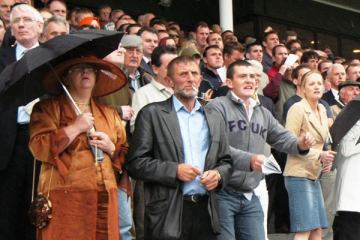
Coming up to the finish line, Galway Races 2003: spectators would have looked just as anxious in 1911
(http://www.galway.net/)
Among the minority unionist community, hunting and the Galway Blazers remained particularly strong. The East Galway Hunt was established in 1791. It fell away during the 1840s but was reformed in 1883. Its masters included J.B Charters (1899-1900), A.P. Pollock (1904-1907) and Frank Kenny (1921-30).
Hunting activities in Galway were subject to controversy arising from ongoing land disputes, and in 1911 huntsmen in Galway had their activities curtailed by a prominent case of hound poisoning. The Galway Blazers’ hunt stables were also burnt down during 1911, although the fire appears to have been started accidentally.
Sport was just one aspect of culture in a county that was diverse and pioneering. It was not just that the population of Galway included writers of many tastes. The idea of Galway was also important. This was a county to which the developing Irish Ireland literary and cultural movement looked for inspiration.
Langauge revival led by Douglas Hyde looked to Galway and to the the fact that half of those who spoke Irish in Ireland were living in county Galway (see Bhreathnach family in Gorumna). Amongst the many Irish-Irelanders who travelled west was the school-teacher, writer and revolutionary, Patrick Pearse.
Edward Martyn was a native of the county and had his home at Tillyra Castle at Adrahan, where the Persses, Lady Gregory’s original family also lived. Coole, the home of Lady Gregory, which proved the inspiration for much of W.B. Yeats’s work, is close to Gort. Her son, Robert Gregory, who signed the census form, was the subject of Yeats’s famous poem, An Irish Airman Foresees his Death
Martyn combined with Yeats and Lady Gregory to establish the Irish Literary Theatre in Dublin and was also the cousin of the novelist George Moore. Martyn was also involved in the establishment of the Feis Ceol, and while Lady Gregory herself is probably best known today for her collaboration with Yeats, she herself was a prestigious playwright, authoring over 40 plays. Coole played host to every substantial literary figure of the period. On the night that the census was taken Lady Gregory and Yeats were domiciled in Nolan’s hotel on South Frederick street in Dublin.
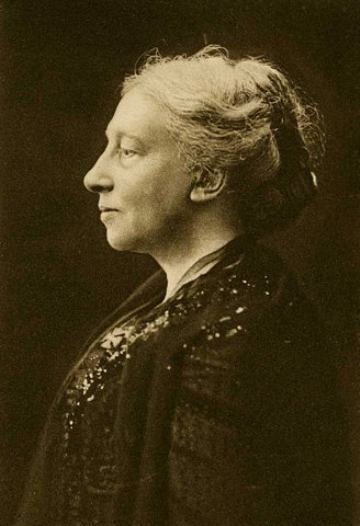
Lady Augusta Gregory as pictured in Our Irish Theatre
(published by G.B. Putnam´s Sons, New York and London, 1914)
Galway proved the inspiration for much of the work of John Millington Synge (see his brother Edward’s return, whose Playboy of the Western World was inspired by his visits to the Aran islands. He died in 1909 two years after his play caused noted controversy on its opening night at the Abbey. James Joyce too was connected to the county, with his beloved Nora Barnacle hailing from Bowlingreen in the city itself (see return for her family; Nora was in Trieste with Joyce by 1911).

